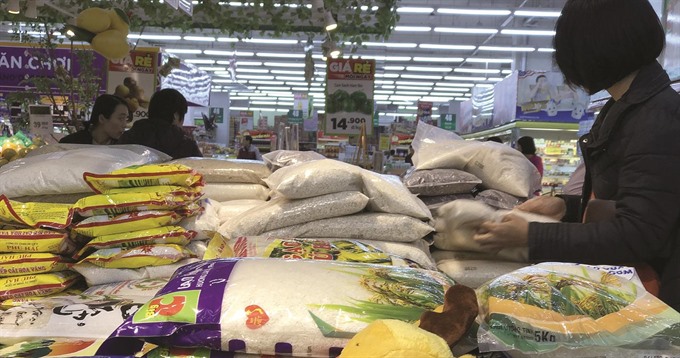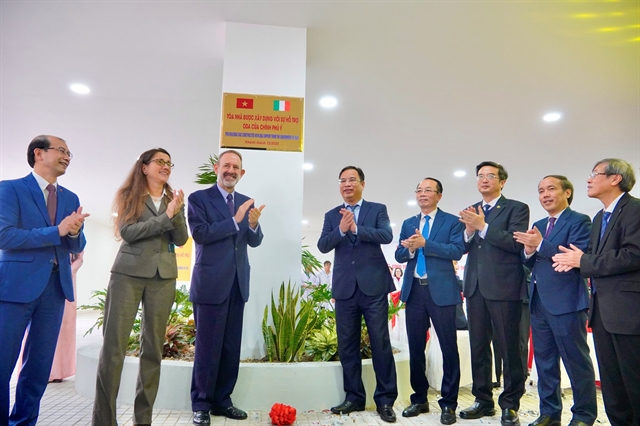 Economy
Economy

Thailand’s plan to sell all its rice reserves of about eight million tonnes this year has sparked concerns that this move will undermine Việt Nam’s rice exports.
 |
| Customers buy rice at the Big C supermarket, Long Biên district, Hà Nội. Vietnamese rice businesses are now focusing on the domestic market instead of exports. - VNA/VNA Photo Thái Hà |
HCM CITY — Thailand’s plan to sell all its rice reserves of about eight million tonnes this year has sparked concerns that this move will undermine Việt Nam’s rice exports.
Nguyễn Văn Đôn, director of Tiền Giang-based Việt Hưng Co Ltd, said rice exports were positive last month, with many contracts signed.
But starting early last week, trading tended to slow, he said, adding that his company has not had any new export contracts. He attributed this to the higher prices of Vietnamese rice compared to last month, and to Thailand’s plan to sell all of its rice stockpiles.
Đặng Thị Liên, director of Long An Foodstuff Co Ltd, said the price of Vietnamese five per cent and 15 per cent broken rice was US$5-10 a tonne higher than the same kinds of Thai rice.
To compete with Thai rice, Vietnamese traders should lower their export price, but domestic rice prices are on the rise, even higher than export prices, making it hard for traders to compete abroad, she said.
Huỳnh Thế Năng, chairman of Việt Nam Food Association, said “It will be hard to compete with Thailand in exporting white rice due to our less competitive prices.”
Vietnamese firms previously exported a lot of white rice to Africa, but now firms are only exporting fragrant rice to the market, he said.
“Thailand’s determination to sell all of the rice in stockpiles in the first half of the year will continue to adversely affect Việt Nam’s rice exports. Việt Nam’s export rice prices are predicted to drop further this year. Only when Thailand’s rice stockpiles are sold out can the rice export market recover,” he said.
Domestic market
Việt Nam produces about 44-45 million tonnes of paddy a year, equivalent to 22-22.5 million tonnes of rice. Domestic consumption accounts for about 15-16 million tonnes a year, and the rest is for export.
Despite being one of the world’s largest rice exporters, Việt Nam’s high-grade rice segment is dominated by foreign brands.
Năng, who is also general director of the Việt Nam Southern Food Corporation (Vinafood 2), said many domestic rice enterprises have implemented strategies to promote their rice brands as well as boost consumption of their products in the home market.
Enterprises have established their own farm and production facilities and are focusing on improving the quality of their rice to international standards as well as building brands for their products.
Last December, Tiền Giang Food Company introduced to the market four to five new rice brands, which are produced following hygiene and food safety standards and are able to enter the US market.
In the case of Sông Hậu Food Company, a member of Vinafood 2, thanks to actively promoting its rice brands and expanding its distribution system, the company last year doubled its domestic sales revenue from 2015, he said.
Other companies, such as Đồng Tháp Food Company and HCM City Food Joint Stock Company, have actively improved their distribution systems, he said.
Consumption volume of Vietnamese rice in the domestic market is expected to increase significantly in the coming time, especially as more and more rice is produced following hygiene and food safety standards.
In addition, programmes to enable consumers to trace the origin of rice will be sped up this year, he said.
Phạm Minh Thiện, director of Đồng Tháp-based Cỏ May Private Enterprise, said: “We have a market of more than 90 million people. This is a very good foundation for us to deal with the supply and demand dynamic of the rice market.” — VNS




